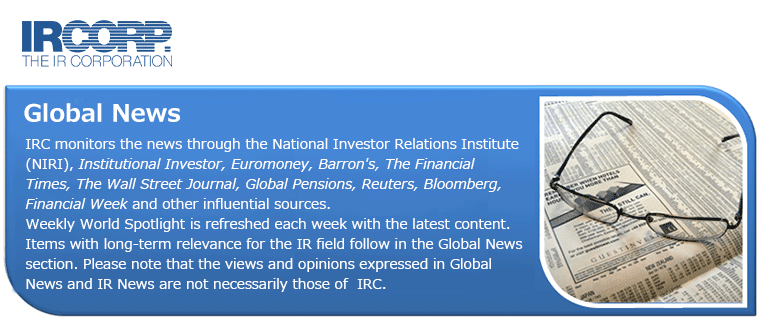Inc. (June Issue)
It’s 2018, “unemployment is at a 17-year low, and every company is competing over the same hot employees.”
Tags: 2018, Competing, Employees, Low, Unemployment
Newsweek (January 18)
“As 2018 begins, the United States has become the largest producer of gas, oil, and coal in history. Its stock market is at record levels. The economy is growing at a 3 percent rate—and unemployment may dip below 4 percent, even though some commentators have claimed over the last decade that it likely would never fall below 5 percent again. The auto, steel, manufacturing, financial, agricultural, and high-tech industries are ascendant.”
Tags: Coal, Economy, Gas, Manufacturing, Oil, Producer, Stock market, U.S., Unemployment
The Economist (November 2)
“On some measures, Japan’s labour market is as tight as it has been since the 1970s. America’s jobless rate, at 4.2%, is the lowest for over 16 years. Inflation has nevertheless been surprisingly weak. In other words, the trade-off between unemployment and inflation, known as the Phillips curve, has become less steep.”
Tags: Inflation, Japan, Jobless rate, Labor, Phillips curve, Surprising, Tight, Trade-off, U.S., Unemployment, Weak
The Economist (April 30)
Developed in the wake of the Great Depressions and World Wars, gross domestic product (GDP) was originally designed “to measure the economy’s capacity to produce. Since then, GDP has become a lodestar for policies to set taxes, fix unemployment and manage inflation.” The metric can be inaccurate and is often overstretched. More robust benchmarks must be developed and this will require “a revolution in national statistical agencies as bold as the one that created GDP in the first place”.
Tags: Benchmarks, Economy, GDP, Great Depressions, Inflation, National statistical agencies, Revolution, Taxes, Unemployment, World Wars
New York Times (August 2)
Millenials are “the most educated generation in history,” but this same generation is “on track to becoming less prosperous, at least financially, than its predecessors.” Millenials “are faced with a slow economy, high unemployment, stagnant wages and student loans that constrict their ability both to maintain a reasonable lifestyle and to save for the future.” On top of that, previous generations are burying them under government debt and insufficiently funded obligations.
Tags: Debt, Economy, Generation, Government, Lifestyle, Millenials, Prosperous, Student loans, Unemployment, Wages
Washington Post (March 11)
An “epidemic of stagnant wages” continues in the U.S. despite robust job growth. In February, the “official unemployment fell to its lowest rate since early 2008. Wages, however, increased by an anemic 0.1 percent. Over the previous 12 months, they increased just 2 percent. Factoring in inflation, they’ve barely increased at all.”
Tags: Growth, Inflation, Jobs, Stagnant wages, U.S., Unemployment
Bloomberg (January 2)
“Venezuela had a banner year in 2014: the world’s highest misery index (inflation plus unemployment), a fresh recession, and a currency whose black-market value plunged faster than even the Russian ruble…. Unfortunately, President Nicolas Maduro doesn’t seem to have any good ideas — any ideas at all, really — for improving things.”
Tags: Black-market value, Currency, Inflation, Misery index, Nicolas Maduro, Recession, Ruble, Russia, Unemployment, Venezuela
Financial Times (November 19)
“After three years of near stagnation and with unemployment stuck at double digit levels, it is increasingly clear that the eurozone’s political and economic crisis will intensify if there is no boost to growth.”
Tags: Crisis, Economic, eurozone, Growth, Political, Stagnation, Unemployment
Wall Street Journal (October 29)
Spain may be Europe’s “only real turnaround story in this crisis.” Growth looks poised to hit 1.3% for 2014. “The economy added 151,000 jobs, and unemployment fell 0.8 percentage points.” But Spain remains a qualified success. At 23.7%, the unemployment rate is “still a numbing figure, but well down from last year’s 26%.”
Tags: Crisis, Economy, Europe, Growth, Jobs, Spain, Turnaround, Unemployment
Institutional Investor (July 23)
However you look at it, “positive inflation momentum is apparent” in the U.S. From the top down, unemployment has fallen. As slack lessens, “we may begin to see signs of this tightening appear in the form of wage growth.” And from the bottom up, there were “multiple factors that pushed inflation lower over the past 12 to 18 months: predominantly, disinflation from medical and core goods components.” But these were driven by unique events like the sequester and the strength of the U.S. dollar. “Neither the medical nor the core goods component is likely to be a drag on inflation going forward.”
Tags: Core goods, Disinflation, Dollar, Drag, Inflation, Medical, Momentum, Sequester, Slack, Tightening, U.S., Unemployment, Wage growth


